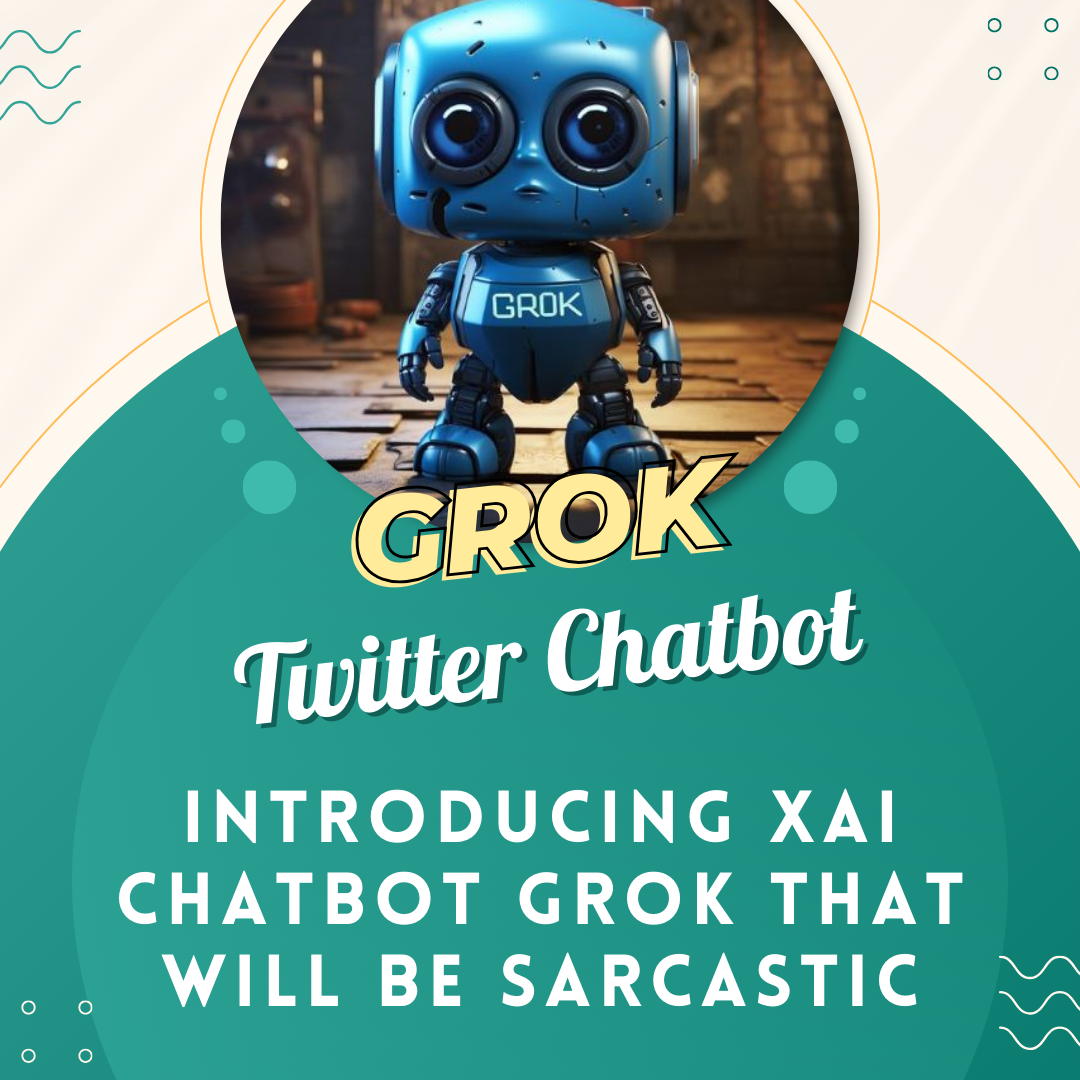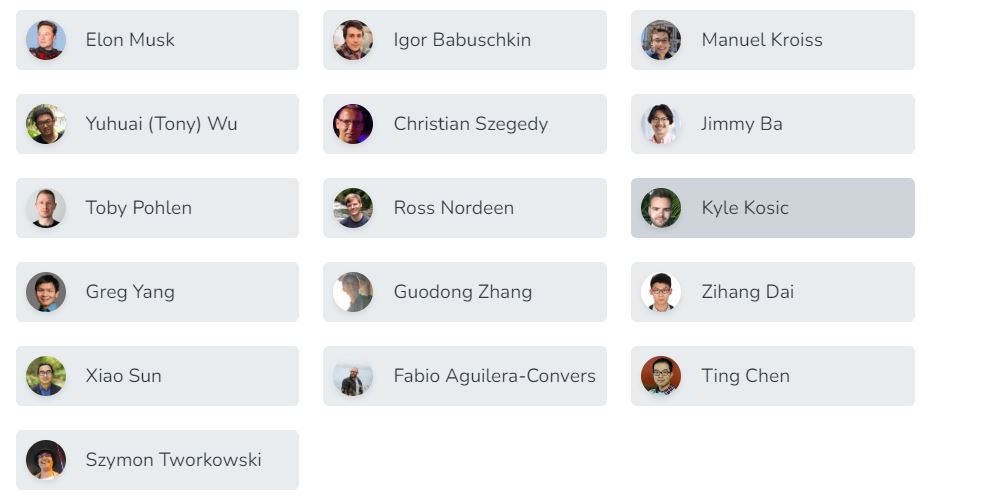
Twitter Chatbot Grok
Twitter Chatbot: Introducing xAI Chatbot Grok That Will be Sarcastic.
Twitter Chatbot
Elon Musk’s AI startup, xAI, has launched a chatbot called Grok, which is inspired by the fictional alien encyclopaedia in Douglas Adams’ sci-fi comedy series The Hitchhiker’s Guide to the Galaxy. Grok is currently in beta testing, and is only available to a select group of paying X users.
Musk has said that he sees Grok as a competitor to OpenAI’s ChatGPT, which is another large language model chatbot that has been gaining popularity in recent months. However, Musk has also said that Grok will be different from ChatGPT in that it will have a more sarcastic and rebellious personality.
It is not yet clear when Grok will be rolled out to all paying X users, or how much it will cost to use. However, Musk has said that he sees Grok as a potential revenue stream for xAI, and that he hopes it will eventually be used by millions of people around the world.
I am curious to see how Grok develops, and whether it will be able to compete with ChatGPT and other large language model chatbots. I am also interested to see how users react to Grok’s more sarcastic and rebellious personality.
What is xAI
xAI is an AI startup founded by Elon Musk in 2022. The company’s mission is to develop AI systems that are explainable and transparent. xAI believes that explainability is essential for building trust in AI, and that it is necessary for AI systems to be able to explain their decisions to humans.
xAI is developing a number of different technologies to make AI systems more explainable. These technologies include:
- Explainable machine learning algorithms: These algorithms are designed to be more interpretable by humans than traditional machine learning algorithms.
- Model visualization tools: These tools help users to understand how AI models work and how they make decisions.
- Human-in-the-loop AI systems: These systems allow humans to interact with AI systems and provide feedback on their decisions.
xAI is still in its early stages, but it has the potential to revolutionize the way that AI systems are developed and used. By making AI systems more explainable and transparent, xAI can help to build trust in AI and enable AI to be used in a more responsible way.
Here are some of the potential benefits of xAI:
- Increased trust in AI: XAI can help to build trust in AI by making AI systems more explainable and transparent. This is important because it allows people to understand how AI systems work and why they make the decisions they do.
- More responsible AI development: XAI can help organizations to develop AI systems in a more responsible way. This is because XAI can help organizations to identify and mitigate potential biases and risks in AI systems.
- Improved AI performance: XAI can help organizations to improve the performance of their AI systems. This is because XAI can help organizations to understand how their AI systems are working and to identify areas where they can be improved.
Overall, xAI is a promising new technology that has the potential to make AI systems more explainable, transparent, and responsible.
xAI on Twitter Chatbot Grok
Here is what xAI says about Grok
Grok is an AI modeled after the Hitchhiker’s Guide to the Galaxy, so intended to answer almost anything and, far harder, even suggest what questions to ask!
Grok is designed to answer questions with a bit of wit and has a rebellious streak, so please don’t use it if you hate humor!
A unique and fundamental advantage of Grok is that it has real-time knowledge of the world via the 𝕏 platform. It will also answer spicy questions that are rejected by most other AI systems.
Grok is still a very early beta product – the best we could do with 2 months of training – so expect it to improve rapidly with each passing week with your help.
At xAI, we want to create AI tools that assist humanity in its quest for understanding and knowledge.
By creating and improving Grok, we aim to:
- Gather feedback and ensure we are building AI tools that maximally benefit all of humanity. We believe that it is important to design AI tools that are useful to people of all backgrounds and political views. We also want empower our users with our AI tools, subject to the law. Our goal with Grok is to explore and demonstrate this approach in public.
- Empower research and innovation: We want Grok to serve as a powerful research assistant for anyone, helping them to quickly access relevant information, process data, and come up with new ideas.
Our ultimate goal is for our AI tools to assist in the pursuit of understanding.
The journey to Grok-1
The engine powering Grok is Grok-1, our frontier LLM, which we developed over the last four months. Grok-1 has gone through many iterations over this span of time.
After announcing xAI, we trained a prototype LLM (Grok-0) with 33 billion parameters. This early model approaches LLaMA 2 (70B) capabilities on standard LM benchmarks but uses only half of its training resources. In the last two months, we have made significant improvements in reasoning and coding capabilities leading up to Grok-1, a state-of-the-art language model that is significantly more powerful, achieving 63.2% on the HumanEval coding task and 73% on MMLU.
To understand the capability improvements we made with Grok-1, we have conducted a series of evaluations using a few standard machine learning benchmarks designed to measure math and reasoning abilities.
GSM8k: Middle school math word problems, (Cobbe et al. 2021), using the chain-of-thought prompt.
MMLU: Multidisciplinary multiple choice questions, (Hendrycks et al. 2021), provided 5-shot in-context examples.
HumanEval: Python code completion task, (Chen et al. 2021), zero-shot evaluated for pass@1.
MATH: Middle school and high school mathematics problems written in LaTeX, (Hendrycks et al. 2021), prompted with a fixed 4-shot prompt.

On these benchmarks, Grok-1 displayed strong results, surpassing all other models in its compute class, including ChatGPT-3.5 and Inflection-1. It is only surpassed by models that were trained with a significantly larger amount of training data and compute resources like GPT-4. This showcases the rapid progress we are making at xAI in training LLMs with exceptional efficiency.
Since these benchmarks can be found on the web and we can’t rule out that our models were inadvertently trained on them, we hand-graded our model (and also Claude-2 and GPT-4) on the 2023 Hungarian national high school finals in mathematics, which was published at the end of May, after we collected our dataset. Grok passed the exam with a C (59%), while Claude-2 achieved the same grade (55%), and GPT-4 got a B with 68%. All models were evaluated at temperature 0.1 and the same prompt. It must be noted that we made no effort to tune for this evaluation. This experiment served as a “real-life” test on a dataset our model was never explicitly tuned for.
Early Access to Twitter Chatbot Grok
We are offering a limited number of users in the United States to try out our Grok prototype and provide valuable feedback that will help us improve its capabilities before a wider release. You can join the Grok waitlist here. This release just represents the first step for xAI. Looking ahead, we have an exciting roadmap and will be rolling out new capabilities and features in the coming months.

OpenAI Valuation: A $90 Billion Bet on the Future of AI
Social Media Marketing Trends 2024: A Review of the Essential Guide to Stay Ahead of the Curve





